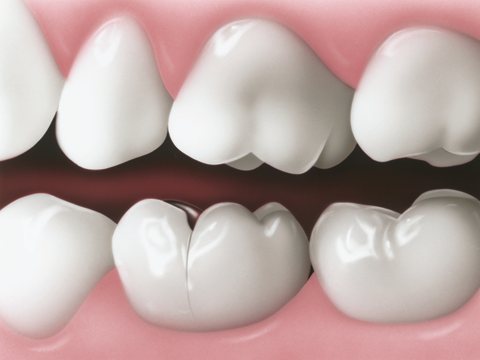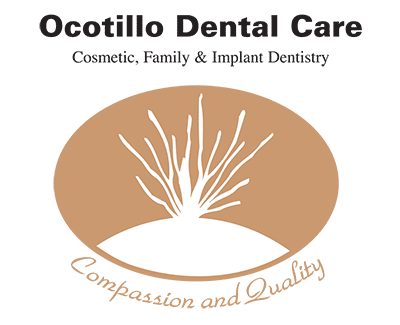A cracked tooth, broken tooth, hurts when biting. There is often tooth sensitivity, but no cavity is present. These are dental conditions that require immediate attention.
A cracked back tooth is one of the most common problems with teeth today. Typically the further back in the mouth, the occurrence of a tooth problem increases. The uncomfortable tooth often is not broken. Broken back teeth are usually less painful than a cracked tooth before it breaks.
The signs and symptoms of a cracked tooth are:

- Temperature sensitivity is especially noticeable when pressure is placed on the tooth.
- The tooth location is far back in the mouth. Therefore, the last molar is most likely, and the risk decreases with each tooth forward.
- The problem tooth often shows significant wear signs, indicating more than normal function against the tooth it bites against.
- When checked with an inked paper called articulating paper, extensive ink areas are left on the tooth rather than a more normal point-to-point contact between the teeth.
- Teeth with large dental fillings are weaker and more susceptible to cracking and breaking.
- The tips of the canine teeth (eye teeth) are worn off.
Can you repair a cracked tooth? Yes and no; the answer is dependent on the type and location of the crack or split.
Dental services and restorations that may be used to prepare or replace a cracked tooth include:
Why do teeth crack?
To understand this, you must first understand what is expected. In a normal situation, the upper and lower back teeth touch each other with point contacts. When a person chews, the back teeth do not touch when the jaw moves from side to side. The four canine teeth (two uppers and two lower) guide the jaws apart, sending a signal to the brain to open the mouth when the jaw slides left or right. The back teeth only make contact when the jaws are fully together. Ideally, the at-risk back teeth only receive vertical force down the tooth center, where they were designed to receive heavy pressure best. Side forces on back teeth are not well tolerated and place the tooth at risk of developing a crack(s). If there is a filling in the tooth, especially a large filling that is also a silver/mercury amalgam, the tooth crack risk dramatically increases. People who grind their teeth have an increased risk of developing a cracked tooth.
What to do to prevent or treat cracked back teeth.
If the tips of the four canine teeth are worn down, they allow the back teeth to come into contact, which results in side-to-side movements. In this case, the individual should consider placing a dental restoration on the canines to improve jaw guidance by eliminating or lessening side-to-side forces on the back teeth.
If a person grinds their teeth at night, they should consider wearing a protective night guard over the upper or lower teeth to lessen the stress on the teeth and the jaw muscles.
Tooth grinding and heavy tooth wearing can indicate tooth interference with normal jaw closure. Therefore, the dentist may feel the individual could benefit from adjusting the bite.
If, on routine examination, the dentist notices a darkened crack line in a tooth, the dentist should consider placing a protective crown or onlay restoration. This contains the walls of the tooth on either side of the crack preventing the crack from propagating through the tooth.
If left untreated, the crack could extend through the tooth to the nerve (pulp) area requiring root canal treatment. If the crack extends through the nerve area to the middle of the tooth where it meets the jaw bone, the tooth would need to be removed.
If the cracked portion ultimately breaks off the tooth, it frequently breaks down to where it emerges from the bone, requiring a crown-lengthening surgical procedure before the dentist can restore the tooth with a dental crown.

Ocotillo Dental Care
Chandler, AZ 85248, USA